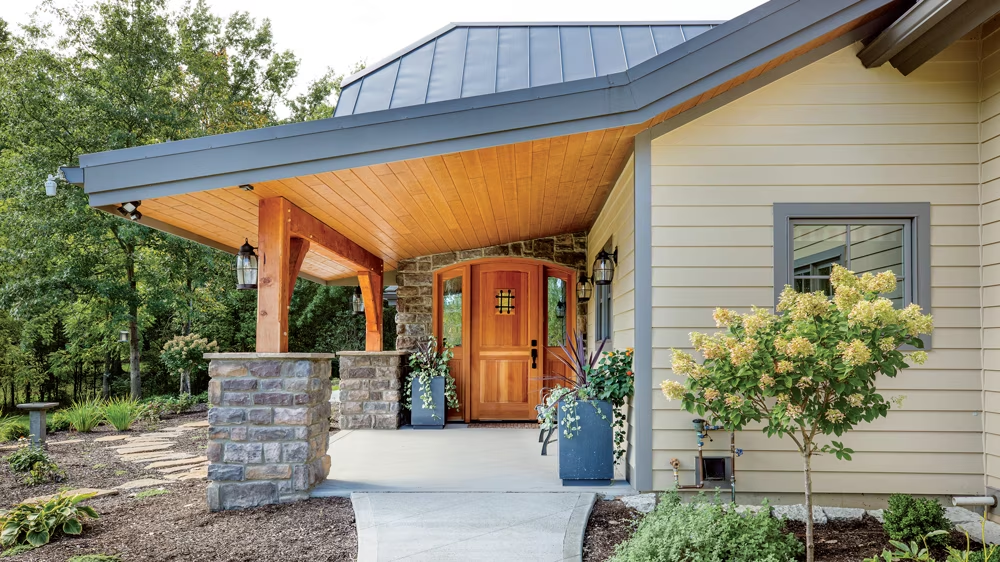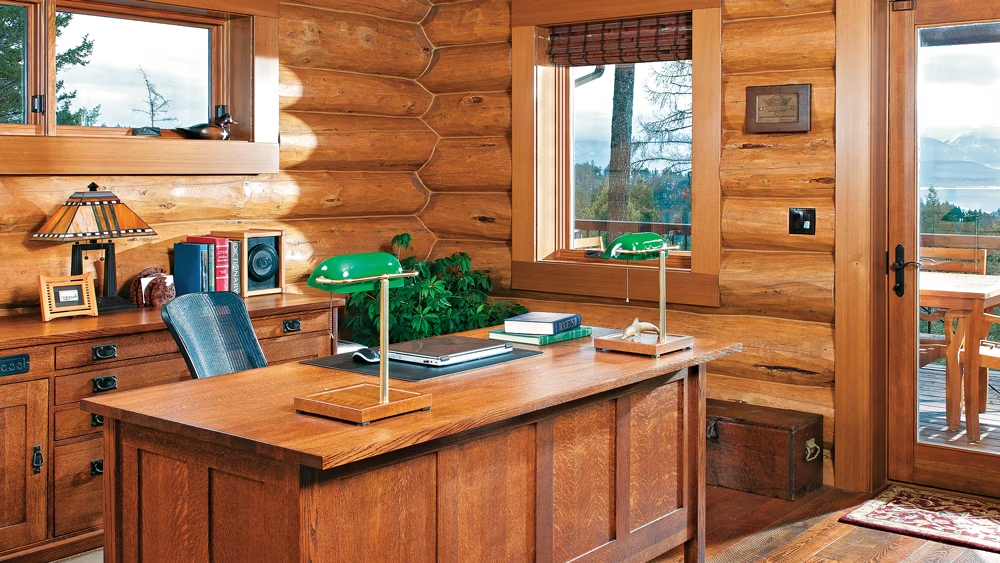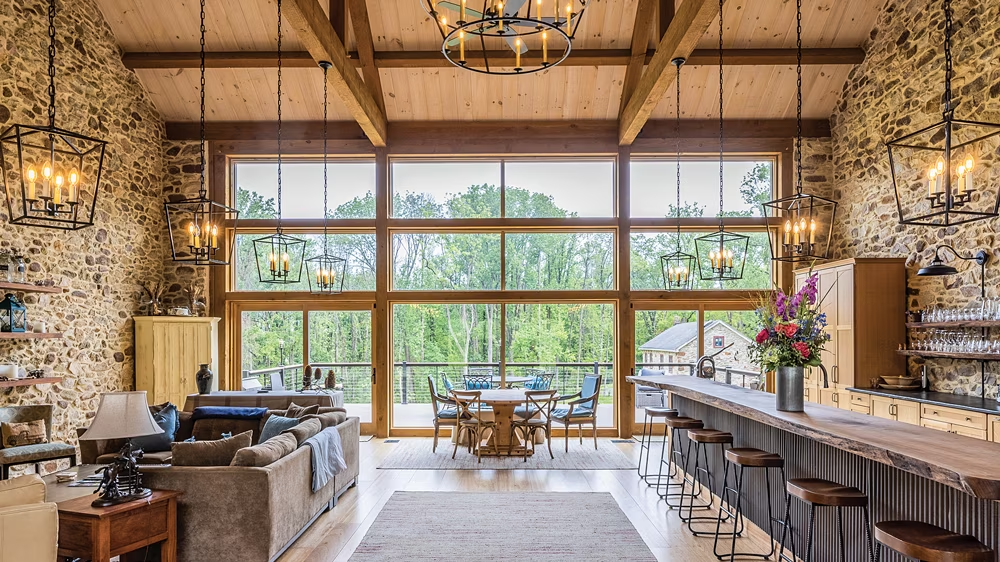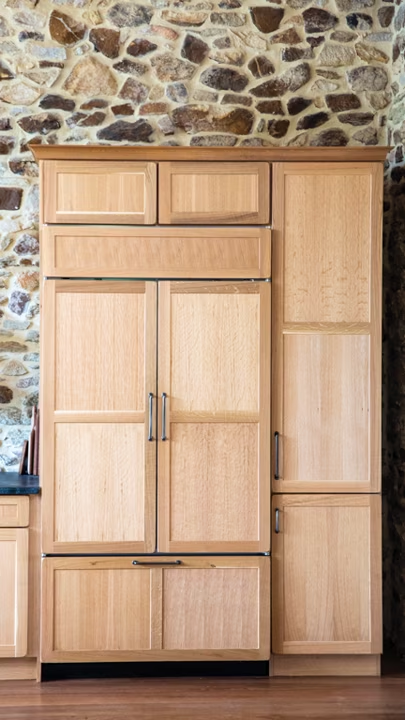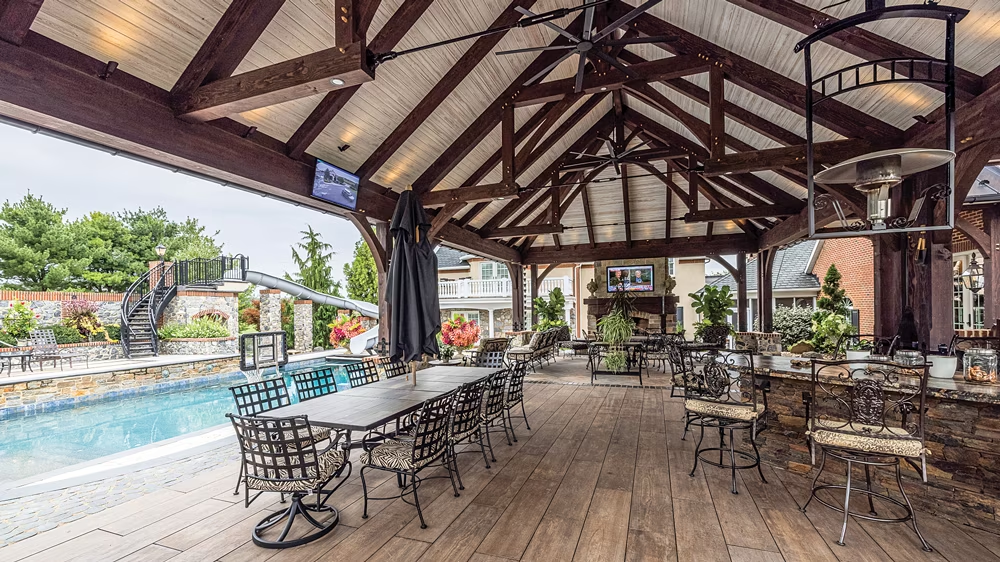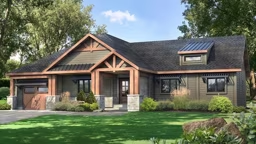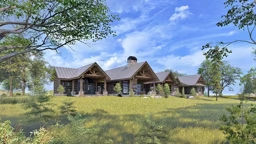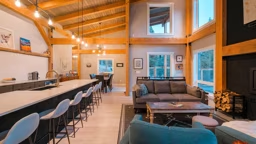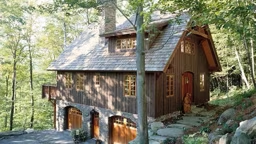Economic efficiency, energy savings, aging in place and overall accessibility — one-story home designs have a lot going for them. If you’re looking to get in on the perks of the “single life,” and design a home with streamlined functionality and show-stopping style, we’ve got more than a few ideas for you to start with.
Essential Spaces.
First and foremost, “You want to make sure all your key amenities are on one level,” says Honest Abe Log Homes design manager, Fred Kendall. In addition to the essentials, like the primary bedroom suite, kitchen, dining and living areas, don’t overlook other functional features. Ensure convenience with easy access to the washer and dryer, utility panel or even an office. However, a loft with a guest bedroom or flex space still scratches the single-level-living itch.
Foundation Fundamentals.
When it comes to choosing a foundation, Mid-Atlantic Timberframes’ design manager, Mike Banta, encourages future homeowners to think ahead. The reason? “The foundation has implications in how you approach a home’s mechanicals, electrical, plumbing (MEP) and HVAC systems,” he says. “Crawl spaces and basements make retrofitting for a future remodel much easier.”
Getting the foundation right has other implications. The excavation labor and foundation material required for a 2,500-square-foot single-level home is going to be much greater than a multi-level home of the same area, which will add to the cost. So, make sure your plan is making good use of every inch of space.
Lifestyle Outlook.
A floor plan should improve your daily life. A home office separated from the great room may encourage productivity. For the active-outdoor types, an easy-to-use gear closet in proximity to an exterior door can help keep things tidy and encourage more outside play time. After all, no one wants to rummage for skis on a powder day!
Privacy Please.
Consider how much separation you want between communal and personal spaces. Options include wings on either side of the shared space (e.g., great room) or having a primary suite on one side and guest bedrooms on the other in an “H” or “U” layout. An “X” or “O” shaped plan is conducive to adding outdoor living space that’s still plenty private.
Overhead Pizazz.
Flat ceilings throughout the house can make a single-level home feel institutional or claustrophobic. Break up the monotony with vaulted or cathedral ceilings and beams. “Vaulted and cathedral ceilings, especially in great rooms, create volume and help a small footprint feel spacious,” Fred says.
Secret Stash Spots.
Don’t let storage woes be a thing in your uni-level home. Look for unused wall space that can hide closets behind panels to eliminate the overuse of doors. Turning a built-in table into a hidden storage cubby is another clever space-saving solution.
Outside Influences.
“We see lots of people wrap a porch around their single-level home,” Fred says. Outdoor living spaces add exterior interest and are an affordable way to expand living and entertaining areas. Porches can be screened, and Mike points out that exposed exterior timbers make for a seamless transition from indoors to out.
The L&T Plus.
Single-level timber frame and log homes come with a big advantage over conventional housing – they have freedom and flexibility with interior wall placements. Large timbers, logs and posts carry the roof load, not interior walls, so one room can flow into the next or you can create separation where you actually need it — not where a structural engineering plan dictates.
Exceptional Entries.
If you need easy access to the front door or want universal design, a stairless, sloping sidewalk is the way to go.
A delineated foyer space will make the entry feel cozy and inviting and allow the rest of the floor plan to unfold slowly. “You don’t want to walk in and immediately be in this huge great room,” Mike advises, adding that size does not matter. “Even bringing the ceiling down in the entry just a bit makes a big difference in how it feels.”
Words to the Wise.
While there are many reasons to love single-level floor plans, a little awareness in the planning phase can help avoid future regrets. Mike advises people show their plans to a builder early on to align systems routing for efficiency and future flexibility. “I cannot overstate the cost implication it has,” he says. And Fred warns his clients not to get too carried away with downsizing. “Sometimes we see folks try and downsize too much, by trying to cram too much into a small space.”
The bottom line? Proper planning goes a long way to enjoying benefits of a one-level log or timber home, both today and down the road. And while the profile of your home may be low, these strategies will allow it to stand tall.




